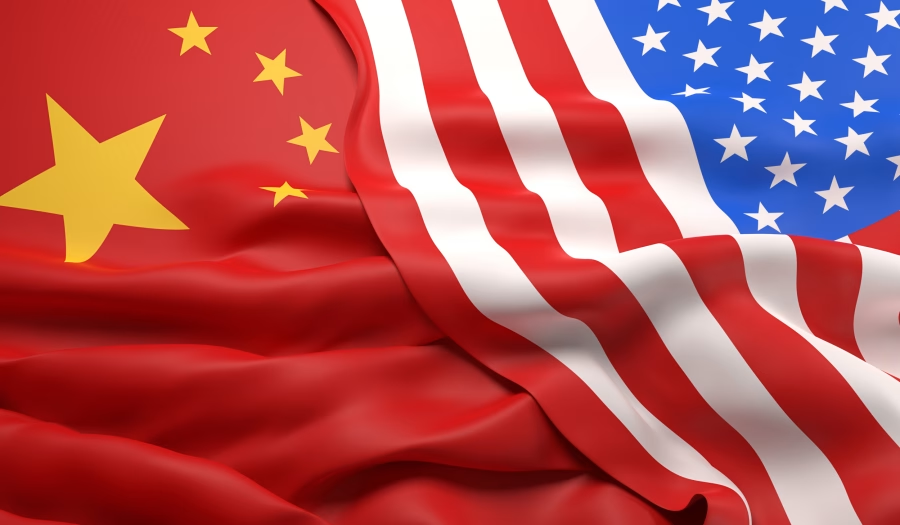Ever wondered why there’s a significant earnings gap between milk processors and dairy farmers? Delve into the advantages of economies of scale, the impact of value addition, the leverage of market power, and the myriad challenges faced by farmers. Intrigued? Continue reading to uncover the insights.

Imagine devoting your life to early mornings, long hours, and backbreaking dairy farming, only to discover that your profits are a fraction of what milk processors gain from your efforts. The revenue gap between milk processors and dairy farmers is a crucial problem impacting lives and rural communities. Join us as we examine why this financial imbalance occurs, concentrating on essential aspects such as economies of scale, value addition, market power, operational expenses, inherent risks, and regulatory issues. Understanding these concepts may help dairy farmers navigate the economic environment, negotiate better terms, fight for more equitable rules, and discover innovative methods to add value to their products. Let’s look at these aspects and how they influence the fortunes of people who provide the milk that feeds millions.
Harnessing the Power of Economies of Scale: How Milk Processors Gain a Competitive Edge
By integrating milk from several farms, processors may take advantage of economies of scale, a concept that refers to the cost advantages that a business obtains due to expansion. This economic notion decreases costs per unit by increasing production efficiency. This enables them to maximize equipment and staff usage, resulting in much cheaper per-unit expenses than individual farmers. They produce considerable cost savings by spreading fixed expenditures like equipment and manpower over a greater output. This efficiency gives processors a competitive advantage, resulting in increased profit margins. Processing large amounts of milk lowers costs and increases negotiating power with suppliers and retailers, boosting profitability. Thus, combining milk from many farms into a uniform framework emphasizes the financial benefits achieved from economies of scale.
Unlocking Market Potential: How Value Addition Transforms Raw Milk into Profitable Products
Milk processors increase the value of raw milk by transforming it into high-quality products such as cheese, yogurt, and butter. These changes include enhanced processes and quality checks to ensure that goods match customer expectations. By providing a variety of items with longer shelf lives and more significant market appeal, processors may access more profitable markets and increase profit margins.
The Leverage of Market Power: How Milk Processors Dominate Price Negotiations
Dairy processors have a huge advantage in terms of market power. With extensive operations and comprehensive product portfolios, processors wield significant power in pricing discussions with retailers. Their capacity to provide diverse products, from essential dairy items to luxury goods, corresponds with retailers’ desire to fulfill changing customer preferences. This leverage is reinforced by the massive amounts of milk they process, which allows for bulk contracts with advantageous terms and constant profit margins.
In contrast, individual dairy producers are at a considerable disadvantage. As price takers, they have little say over the pricing established by processors and the market. Their smaller-scale enterprises concentrate on raw milk production and need more added value of processed goods. This leads to little bargaining leverage, pushing farmers to accept market pricing or processing contracts. The perishable nature of milk exacerbates the problem since producers must sell fast, often at unfavorable rates, to minimize waste. As a result, the power balance overwhelmingly favors milk processors, leaving dairy producers with limited negotiation strength and high price volatility. Processors may get access to more profitable markets and increase profit margins by providing a variety of items with longer shelf life and more significant market appeal.
The Financial Weight: Navigating the High Costs of Dairy Farming vs. Predictable Expenses of Milk Processing
A dairy farm requires significant investment in land, cows, feed, equipment, and manpower. These costs are substantial and fluctuating, creating financial uncertainty for farmers. Feed price fluctuations and unexpected veterinary bills might cause economic disruptions. The considerable initial capital and continuing upkeep further burden their financial stability, making constant profit margins difficult to maintain.
In sharp contrast, milk processors have more predictable operational expenses. Their primary expenditures are for processing facilities, which, once completed, have relatively steady running expenses. Processors may use technology and established procedures to generate economies of scale, which lowers per-unit costs and increases profit margins. This regularity enables them to arrange their finances more accurately, giving a cushion that dairy producers often lack.
Facing Unpredictable Challenges: The High-Stakes World of Dairy Farming vs. the Resilience of Milk Processors
Dairy farming is a high-risk profession. Disease outbreaks in cattle, such as bovine TB, may decimate herds and force obligatory culling, resulting in significant financial losses. Furthermore, milk price volatility reduces farmers’ revenue since they have limited influence over market dynamics. Price drops may result in severe revenue losses while growing feed and veterinary expenses reduce profit margins. Droughts and floods are hazardous to agricultural operations, limiting pasture availability and milk output, as shown here. However, despite these challenges, dairy farmers demonstrate remarkable resilience and determination in their pursuit of a sustainable livelihood.
In contrast, milk processors reduce these risks via diversification and contractual agreements. Processors mitigate raw milk price volatility by broadening their product lines to include cheese, yogurt, and butter. These items fetch higher, steady pricing, resulting in more predictable income streams. Contracts with retailers and suppliers protect processors from market volatility, providing economic certainty that most dairy producers cannot afford.
Regulatory Framework: The Double-Edged Sword Shaping Dairy Farmers’ Earnings
Government rules greatly influence dairy producers’ revenues, frequently serving as a double-edged sword. On one hand, these guidelines are intended to stabilize the dairy industry and provide a consistent milk supply for customers. However, they also set price ceilings, limiting what farmers can charge. While this keeps consumer costs low, it reduces farmer profit margins. Farmers can only sometimes pass on growing expenses like feed and veterinary care. Still, processors may employ scale economies to retain higher profits. This regulatory environment emphasizes farmers’ vulnerability and the need for legislative measures that balance consumer requirements and farmer financial security. It’s a delicate balance that requires careful consideration and potential adjustments to ensure a fair and sustainable dairy market for all stakeholders.
The Bottom Line
The revenue disparity between milk processors and dairy farmers stems from structural conditions favoring processors. However, this is not a fixed reality. Processors increase profitability by utilizing economies of scale, lowering per-unit costs. Transforming raw milk into higher-value goods like cheese and yogurt improves their market position. Processors may negotiate better terms with retailers because they have more market power. At the same time, farmers are sometimes forced to accept predetermined rates. Dairy producers have high and unpredictable operational costs, while processors have more predictable charges. Disease outbreaks and shifting feed prices threaten farmers’ incomes, but processors reduce these risks via diversification and contracts. Regulatory efforts often reduce farmers’ profit margins while seeking market stability. Understanding these factors is vital for promoting a more equitable dairy market. Advocating for regulatory changes, cooperative structures, and novel farming methods may improve dairy farmers’ financial health by encouraging improved industry practices and enabling them to obtain equitable terms and long-term development. This potential for change should inspire hope and optimism among industry stakeholders and individuals interested in the economics of dairy farming.
Key Takeaways:
- Economies of Scale: Milk processors operate at a larger scale than individual dairy farmers, allowing them to reduce costs per unit of milk processed and achieve higher profit margins.
- Value Addition: By transforming raw milk into high-demand products like cheese, yogurt, and butter, milk processors can command higher prices and derive greater earnings.
- Market Power: The considerable market influence of milk processors enables them to negotiate better prices with retailers, in stark contrast to dairy farmers who are often price takers.
- Operating Costs: The high and variable operating costs of dairy farming – including land, cattle, feed, equipment, and labor – stand in opposition to the more predictable and controllable expenses of milk processors.
- Risk Management: Dairy farmers face significant risks such as disease outbreaks, price volatility, and weather-related challenges, whereas milk processors can offset these risks through diversification and contracts.
- Regulation: In certain regions, government regulation of dairy prices can limit the income that farmers receive for their milk, further contributing to the financial disparities between farmers and processors.
Summary:
The revenue gap between milk processors and dairy farmers is a significant issue affecting rural communities. Factors such as economies of scale, value addition, market power, operational expenses, inherent risks, and regulatory issues contribute to this financial imbalance. Processors gain a competitive edge by integrating milk from multiple farms, increasing production efficiency and resulting in cheaper per-unit expenses. They also have market power due to their extensive operations and comprehensive product portfolios, allowing them to negotiate better terms with retailers. Dairy farmers face challenges due to the financial weight of farming vs. predictable expenses of milk processing, which require significant investment in land, cows, feed, equipment, and manpower. Processors mitigate these risks through diversification and contractual agreements, ensuring higher, steady pricing and more predictable income streams. Government rules significantly influence dairy producers’ revenues, often serving as a double-edged sword. Advocating for regulatory changes, cooperative structures, and novel farming methods may improve dairy farmers’ financial health by encouraging improved industry practices and enabling them to obtain equitable terms and long-term development.












